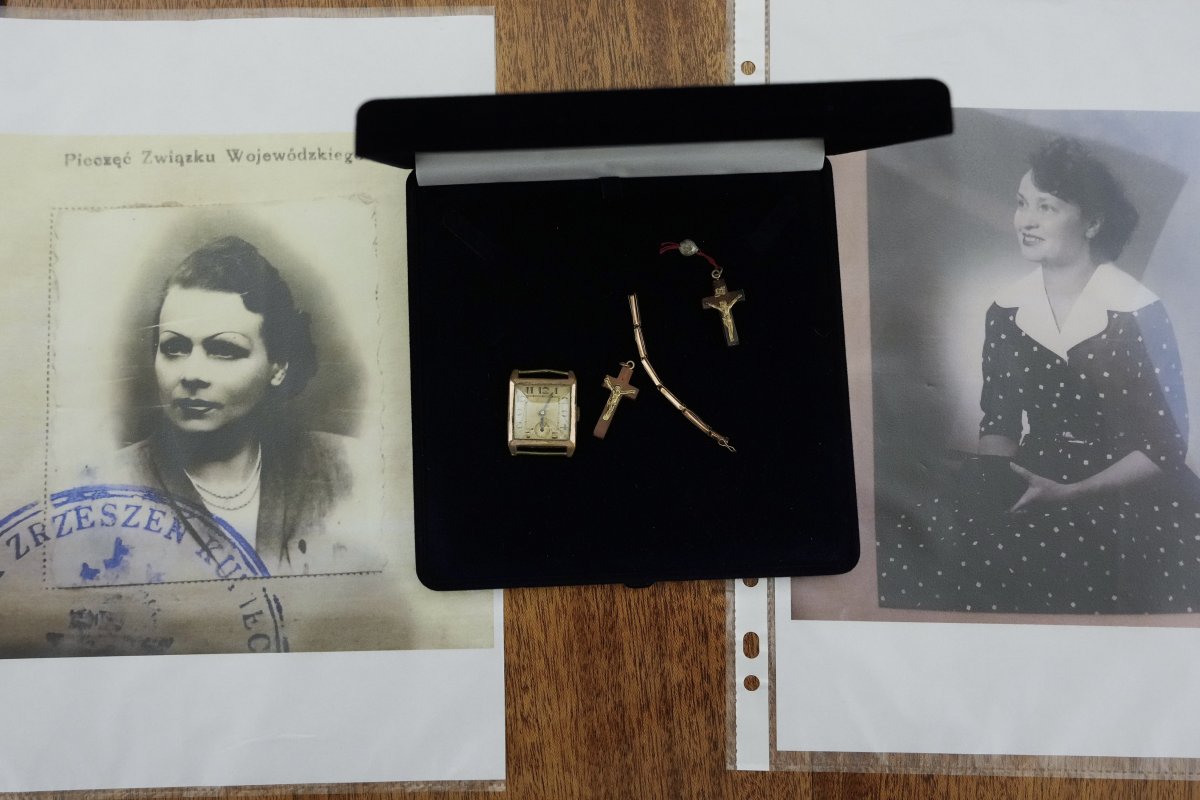In a ceremony held in Warsaw this week, personal belongings of 12 Polish inmates from Nazi German concentration camps during World War II were returned to their families.
The items are part of a larger initiative to reconnect families with valuables stolen by the Nazis.
The Arolsen Archives, an international center focused on Nazi persecution, organized the return of confiscated jewelry and mementos.
Among those present was the family of Stanislawa Wasilewska, who was captured by Nazi troops on Aug. 31, 1944, during the Warsaw Uprising.

Czarek Sokolowski/AP
She was sent to Ravensbrück, a women’s concentration camp in Germany, before being transferred to the forced labor camp at Neuengamme.
Wasilewska had her valuables confiscated upon arrival at the camp.
On Tuesday, her grandson and great-granddaughter received her jewelry—two amber crucifixes, part of a golden bracelet, and a gold wristwatch engraved with the initials “KW” and the date March 7, 1938, likely commemorating her wedding to Konstanty Wasilewski.
“This is an important moment in our lives, because this is a story that we did not fully know about and it came to light,” said Malgorzata Koryś, Wasilewska’s great-granddaughter, during the ceremony.

Czarek Sokolowski/AP
The archives hold records on 17.5 million victims and have amassed around 2,000 confiscated items from concentration camp inmates across over 30 countries.
The items include wedding rings and watches, and were stored in envelopes marked with the prisoners’ names, allowing for their eventual return.
For Adam Wierzbicki, the ceremony brought a bittersweet connection to his family’s history.
He received two rings and a gold chain once belonging to Zofia Strusińska and a tooth filling from Józefa Skórka, two sisters of his great-grandfather who were interned at Ravensbrück and Neuengamme.
The items were a reminder of his family’s struggles.
“History will catch up with you,” Wierzbicki said, adding that it felt as if his aunts were “looking at me from the past.”
The ceremony is part of the archives’ broader campaign, “Warsaw Uprising: 100 Untold Stories,” marking the 80th anniversary of the 1944 Warsaw Uprising against Nazi occupation.
This initiative aims to reach the families of 100 victims, reconnecting them with mementos left behind by loved ones who fought or were captured during the uprising.
Many of the families had little knowledge of the items’ existence before being contacted by volunteers.
Floriane Azoulay, director of the Arolsen Archives, emphasized the importance of these items.
“Every object that we return is personal,” she said.
“It’s the last personal thing a person had on them before they became a prisoner, before they became a number. So it is a very important object for a family.”
This article includes reporting from The Associated Press


